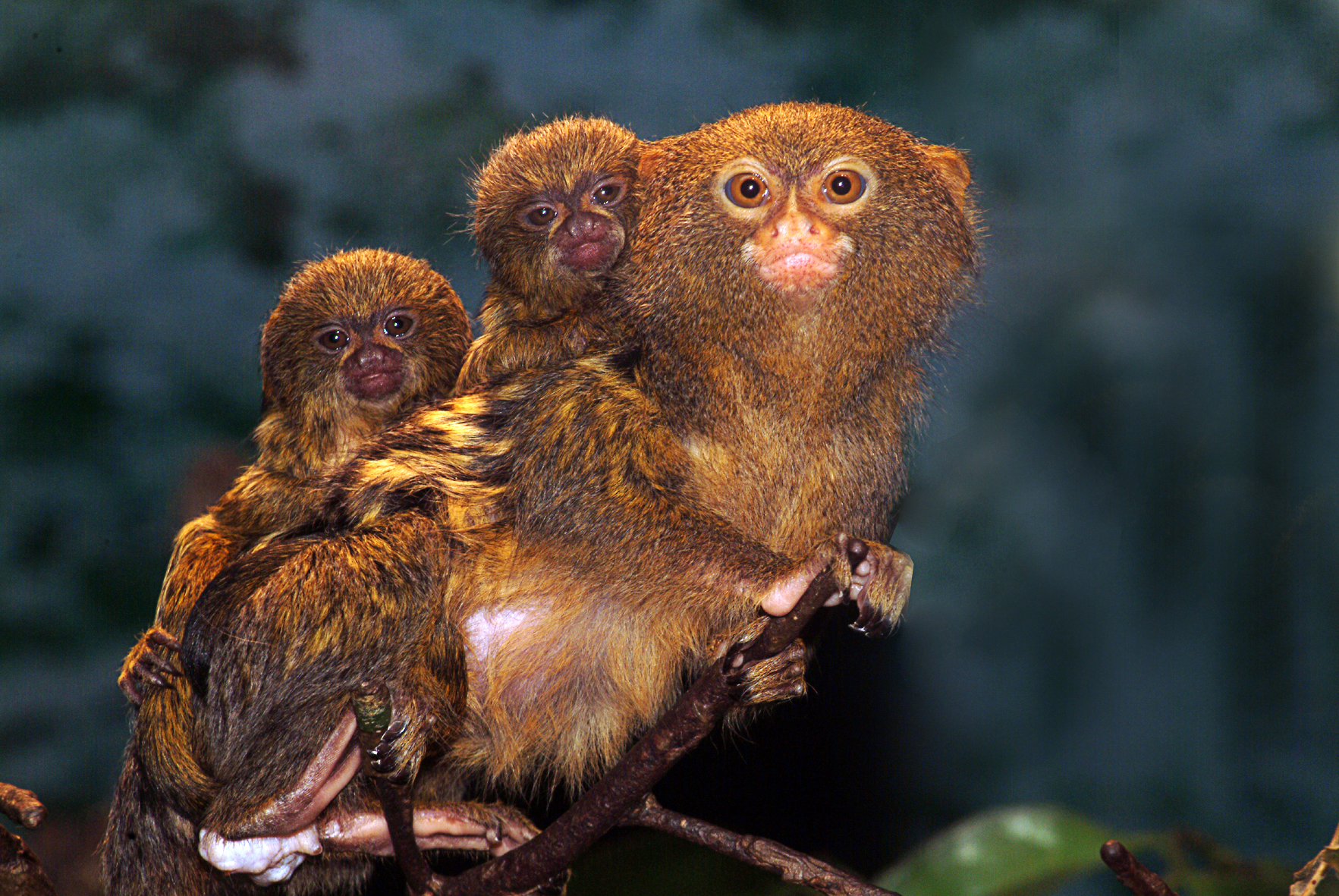Reproduction

Pygmy marmosets live in groups of two to nine members and have an average lifespan of 12 years (de la Torre & Snowdon, 2009; Nature, 2013). Troops commonly consist of a monogamous male and a female with their offspring (Animal Diversity Web, 2012).
Pygmy marmosets reproduce sexually throughout the year and only the dominant female in the troop will breed (Animal Diversity Web, 2012). A female in heat will constantly be followed by the dominant male in free-ranging groups. An organism in heat or estrous refers to the phase when a female is sexually accessible and willing to reproduce. Gestation is 19-20 weeks and females most commonly give birth to fraternal twins (Townsend, 2001). Fraternal twins result from two eggs being independently fertilized by two different sperm cells. It is not uncommon for pygmy marmosets to have a single infant but it is rare for triplets to occur. (Animal Diversity Web, 2012; Townsend, 2001)
Similar to humans, pygmy marmosets have a gametic life cycle,
which means that the only stage with haploid (n) cells is the
gametes. Haploid cells have one set of unpaired chromosomes as
opposed to diploid (2n) cells that have two complete sets of
chromosomes, one from each parent. First, an adult diploid pygmy
marmoset form haploid sperm or egg cells (depending on gender)
through meiosis. When they mate, the sperm and egg join during
fertilization to form a diploid zygote. This zygote then goes
through mitosis to develop into a baby pygmy marmoset and then into
an adult. Other animals with this life cycle include
beavers and
ground squirrels.
When a pygmy marmoset is born, it only weighs about 16 grams (Animal Diversity Web, 2012). A newborn’s eyes are open at birth and it only lacks fur on its belly. For the first month, the infant is constantly carried by the mother or father and receives its nutrients by nursing. After the first month, “the male become the primary carrier with help from subadults and juveniles” (Townsend, 2001). At six months, they lose their milk teeth and their diet converts to exudates, tree sap or gum. As they mature, they spend an increasing amount of time playing in the trees. Sexual maturity is reached at 18 months (Animal Diversity Web, 2012). When adulthood is reached, an individual can either join a new troop or stay as a non-reproducing member. According to Animal Diversity Web, “Juveniles typically remain with their group until two subsequent birth cycles have passed” (Animal Diversity Web, 2012).
Pygmy marmosets spend a large amount of time dedicated to social grooming. Every member is involved and, again, the dominance hierarchy is demonstrated as dominant females were groomed by subordinate females more often than vise-versa (Townsend, 2001).
Next: Interactions